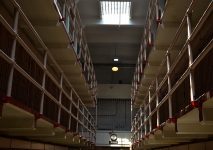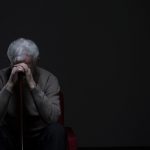Supermax Prisons: More Harm than Good?

In August this year, Stephen Jamieson famously scaled the perimeter wall of Goulburn prison to escape, using bed sheets and a pillow to protect himself from the razor wire. Officers caught up with Jamieson less than 10 hours later, placing him in the prison’s “Supermax facility”, known more formally as the High Risk Management Correctional Centre (‘HRMCC’).
Supermax is the most secure form of incarceration in Australia – it is a place where security is heightened to keep inmates strictly monitored and controlled, making it extremely difficult to harm other inmates or guards, or to escape.
Inmates in Suepermax are often kept in solitary confinement for up to 23 hours a day, and prohibited from undertaking programs and activities, amongst many other restrictions.
Supermax can have a devastating long-term impact upon the psychological, physical and emotional health of inmates – while such strict control may be necessary in extreme cases, some have questioned whether it is appropriate in other situations, such as the case of Jamieson.
Supermax Prisons
The first known Supermax prison was Alcatraz, which is surrounded by water in San Francisco Bay. It operated from 1934-1963, after which it was permanently closed down as a prison facility and later became a tourist attraction. Despite 14 known escape attempts, no inmate is known to have ever successfully escaped.
Supermax is short for “super-maximum security”. It is an extremely expensive form of incarceration – costing $20 million to build just 75 beds.
At its opening in 2001, then Premier Bob Carr made it clear that the facility was intended to hold only the worst offenders, stating that:
“These are the psychopaths, the career criminals, the violent standover men, the paranoid inmates and gang leaders. The intensive programs in place in the HRMU will try to break the cycle of violence so these prisoners can safely be placed back into the mainstream prison system.”
It had two main purposes:
(1) to keep inmates from threatening the order and security of the prison system, and
(2) to rehabilitate inmates so they can eventually be integrated into the main prison, and if they are ever released, into society.
Who Ends up at Supermax?
Inmates must be designated as ‘extreme high risk restricted’ (an ‘AA’ rating) before they can be sent to Supermax.
Regulation 15 of the Crimes (Administration of Sentences) Regulation (NSW) 2014 says that the Commissioner of Corrective Services can designate an inmate to this category if they are:
(i) an extreme danger to other people; or
(ii) an extreme threat to good order and security
Procedural Unfairness
There is no requirement that the Commissioner’s decision to classify an inmate as AA is reasonable – which means that there is nothing to safeguard inmates against an unfair, unjust or even politically motivated classification.
The NSW Supreme Court recently rejected an appeal by a man who is being held in Supermax, even though his trial is not until next year. That man, Omarjan Azari, is facing terrorism charges, and is classified as AA.
The court found that did not have the power to overrule Azari’s AA status, even though it acknowledged that the conditions in which he is being kept are “onerous”.
Justice Garling found that making a high-risk classification is “a matter for correctional staff” and cannot be overruled by the court. This is despite his observation that the case against Mr Azari is weak:
“I have concluded that that material does provide reasonable support for a conclusion that the crown will … be able to comfortably satisfy a jury that the applicant has committed the offences which are alleged.”
This means that the Commissioner has the final say over whether inmates are subjected to the harsh conditions of Supermax, even if the case against them is weak and they present no real risk to anyone.
Terrorism Suspects and Supermax
It has been argued that the current hysteria surrounding terrorism has led to inmates being given AA classifications and sent to Supermax despite not presenting an “extreme danger” to others or to the prison system.
Those in Supermax for terrorism-related offences include Faheem Kahlid Lodhi (R v Lodhi [2006] NSWCCA), and the “Sydney-five“, comprising Khaled Cheikho, Moustafa Cheikho, Mohamed Ali Elomar, Abdul Rakib Hasan and Mohammed Omar Jamal.
However, others have argued that it is imperative to closely monitor these people and subject them to strict controls in order to ensure that they do not attempt to orchestrate terrorist activities from within prison walls.
Do Supermax Prisons Reduce Disruptive Behaviour?
The harsh conditions in Supermax are designed to prevent inmates from engaging in disruptive behaviour.
However, US studies have suggested that treating inmates as violent criminals becomes a self-fulfilling prophecy – a psychological feedback loop where inmates become more violent or aggressive in response to their treatment. The studies also suggest that solitary confinement for lengthy periods causes extreme frustration, desperation and aggression.
The studies suggest that Supermax does little to prevent disruptive behaviour in the long term, and may even be counterproductive to an inmate’s successful reintegration into the general population, or back into the community if they are ever released.
But it seems that concepts like reintegration and rehabilitation have very little to do with the criminal justice system these days.






